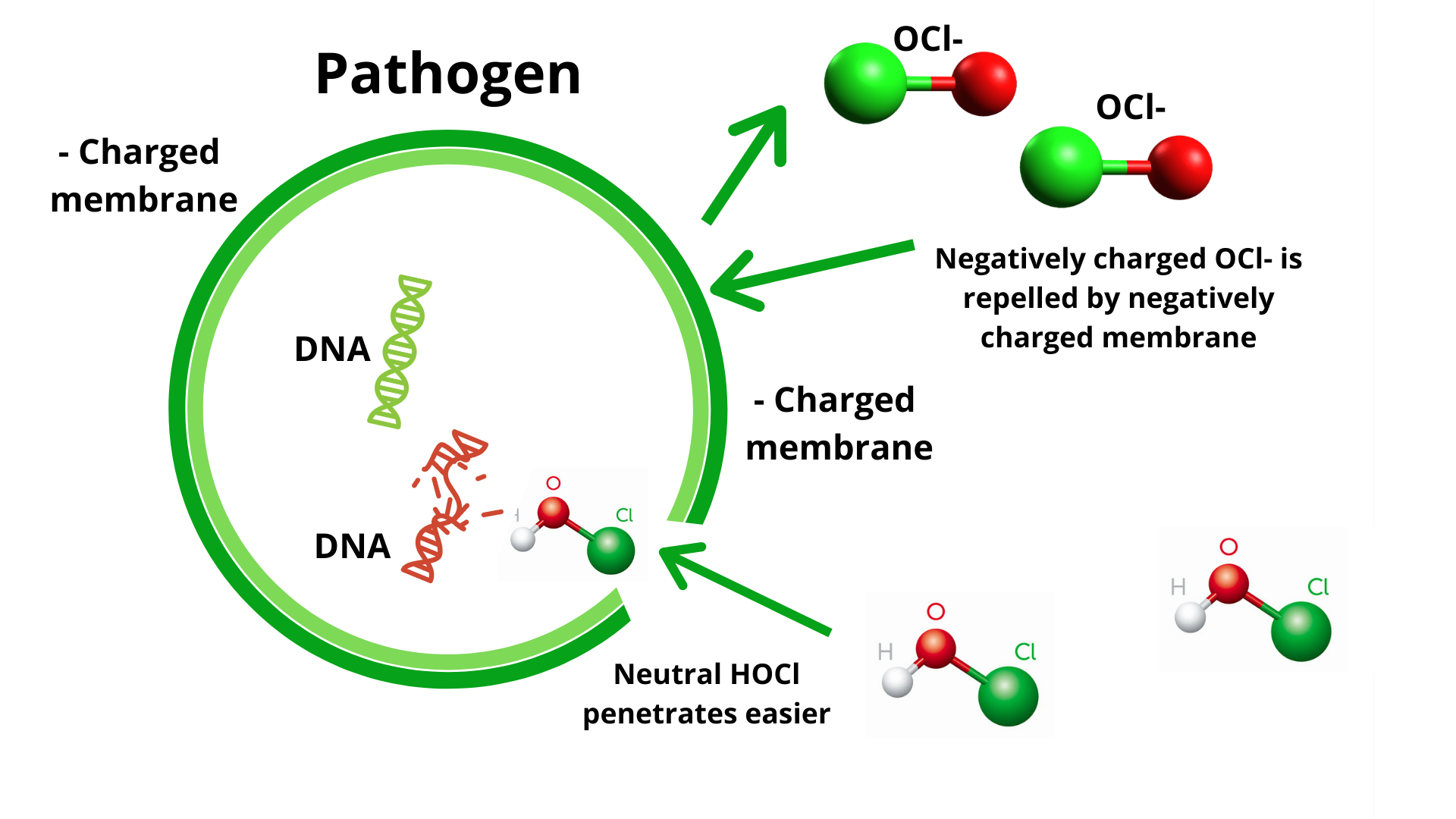One chemical that is frequently used as a disinfectant is calcium hypochlorite. It has a strong chlorine smell and is a solid white powder that dissolves in water. Water treatment and the disinfection of surfaces, tools, and facilities are both major uses for calcium hypochlorite. Including bacteria, viruses, fungus, and protozoa, it is effective against a wide range of microorganisms.
The calcium hypochlorite's chemical composition
The salt of calcium hydroxide (Ca(OH)2) and hypochlorous acid (HOCl) is known as calcium hypochlorite. Calcium hypochlorite has the chemical formula Ca(ClO)2 with a molecular weight of 142.98 g/mol. Calcium hypochlorite has a weight percentage of 65% to 70% accessible chlorine, which indicates how effective it is in cleaning. The substance can breakdown quickly in the presence of acids, heat, or sunshine, producing chlorine gas while remaining stable under normal circumstances.
When calcium hypochlorite is dissolved in water, hypochlorous acid (HOCl) is released, which is primarily what causes the disinfection action. Strong oxidants like hypochlorous acid can break through cell membranes and damage DNA, proteins, and enzymes in cells. Additionally, chloramines are created when hypochlorous acid combines with organic materials like proteins and lipids, further harming microbial organisms. Additionally, the calcium hypochlorite solution's high pH may enhance its disinfectant properties by compromising the integrity of cell membranes.
Effective against bacteria
Gram-positive and gram-negative bacteria are both very susceptible to calcium hypochlorite's potent antibacterial properties. Listeria monocytogenes, Salmonella, Escherichia coli, and Staphylococcus aureus are just a few of the dangerous bacteria that it may destroy. Numerous variables, such as the quantity and duration of the solution's contact time, the pH of the water, and the kind of bacteria being treated, might impact calcium hypochlorite's capacity to kill bacteria.
According to studies, calcium hypochlorite may decrease bacterial populations by 99% when applied at 200–500 ppm (parts per million) concentrations and 1–10 min exposure intervals. Bacterial populations can be reduced by 99% in approximately 30 seconds using calcium hypochlorite solutions up to 1000 ppm in concentration. Calcium hypochlorite's disinfectant action is significantly influenced by the pH of the water, with best results being at a pH of 6.5 to 7.5.

Effective against viruses
Additionally very powerful against viruses, both enclosed and non-enveloped, is calcium hypochlorite. The lipid envelope that surrounds enveloping viruses, including coronaviruses and influenza viruses, makes them susceptible to disinfectants like calcium hypochlorite. While adenovirus and norovirus have more robust protein coatings, they are nonetheless susceptible to calcium hypochlorite.
According to studies, calcium hypochlorite, when employed at concentrations between 500 and 1000 ppm and exposure intervals of 5 to 10 minutes, may eliminate viral populations by 99.9%. In as little as 30 seconds, higher calcium hypochlorite concentrations of up to 5000 ppm can eliminate 99% of the viral population. The kind of virus, solution concentration, contact time, and presence of organic matter are some of the variables that affect calcium hypochlorite's capacity to disinfect against viruses.
Effective anti-fungal
Molds and yeasts are among the fungi that calcium hypochlorite is effective against. However, calcium hypochlorite may pierce this barrier and harm fungal cells. Fungal spores have a hard outer shell that can shield them from disinfectants. Aspergillus, Candida, and Penicillium are just a few of the fungi that calcium hypochlorite is successful against.
When employed at concentrations between 200 and 1000 ppm and exposure durations between 10 and 60 minutes, studies have shown that calcium hypochlorite may eliminate the fungus population by 99.9%. In just five minutes, higher calcium hypochlorite concentrations of up to 5000 ppm can eliminate the fungus population by 99.999%. The kind of fungus, solution concentration and contact duration, as well as the presence of organic materials, all affect calcium hypochlorite's capacity to disinfect fungi.
Effective against protozoa
Protozoa, including aquatic parasites like Giardia and Cryptosporidium, can be destroyed by calcium hypochlorite. Although calcium hypochlorite may successfully eliminate these parasites from water and they are resistant to many disinfectants, they can cause gastrointestinal sickness.
When used at concentrations between 10 and 15 ppm and with exposure lengths of at least an hour, studies have shown that calcium hypochlorite may reduce the populations of Cryptosporidium and Giardia by 99%. Protozoa populations can be reduced by 99% in approximately 10 minutes with higher calcium hypochlorite concentrations of up to 50 ppm. The kind of parasite, the concentration and contact duration of the solution, the presence of organic matter, and other variables all impact calcium hypochlorite's capacity to disinfect protozoa.